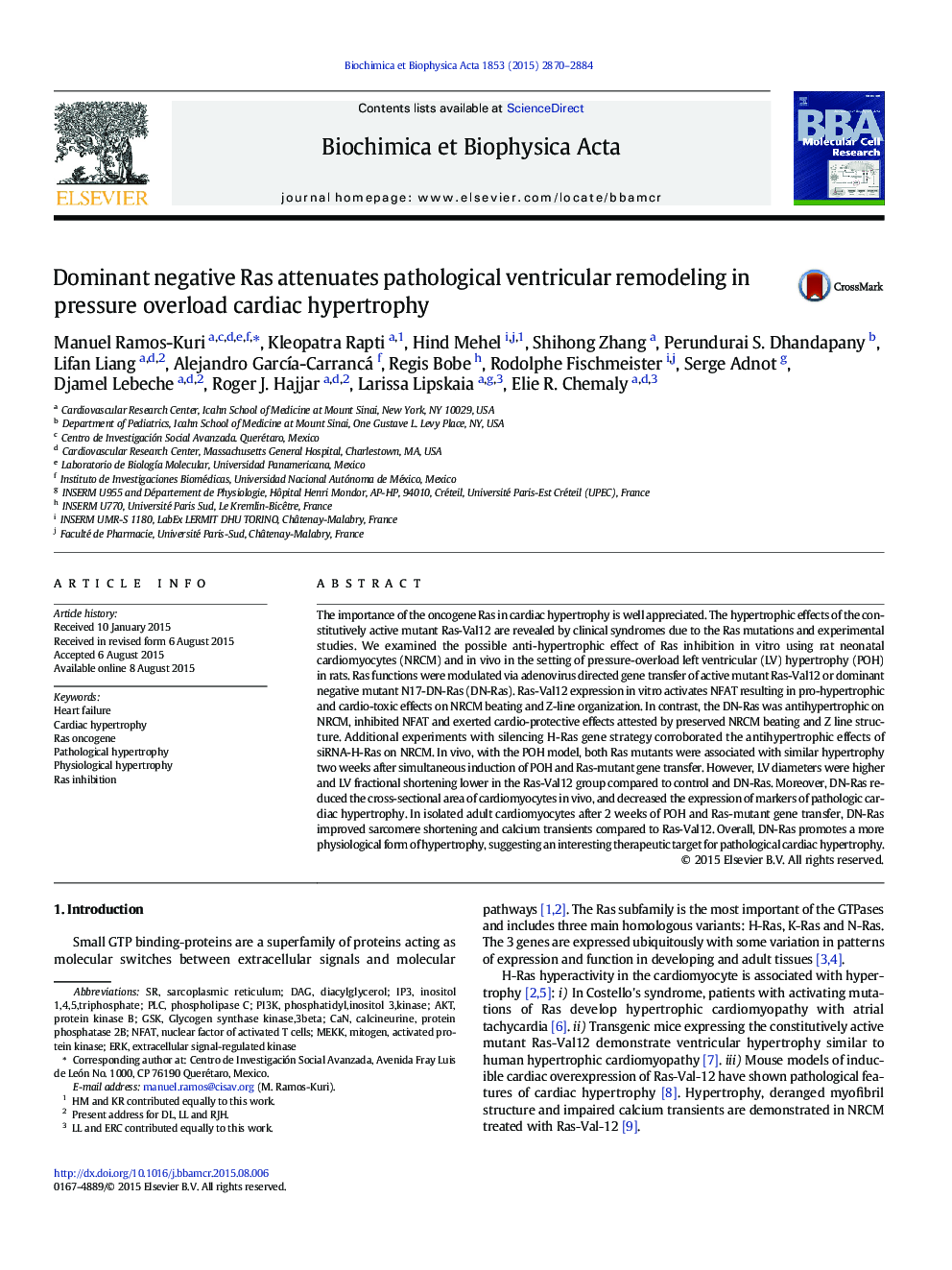| Article ID | Journal | Published Year | Pages | File Type |
|---|---|---|---|---|
| 1950465 | Biochimica et Biophysica Acta (BBA) - Molecular Cell Research | 2015 | 15 Pages |
•The importance of the oncogene Ras in cardiac hypertrophy is well appreciated.•We used a dominant negative (N17-DNRas) mutant and an active mutant (Ras-Val12).•N17-DNRas was antihypertrophic and cardioprotective on neonatal rat cardiomyocytes.•N17-DNRas attenuated pathological remodeling in left ventricular pressure overload.•In contrast, Ras-Val12 was prohypertrophic and cardiotoxic in vitro and in vivo.
The importance of the oncogene Ras in cardiac hypertrophy is well appreciated. The hypertrophic effects of the constitutively active mutant Ras-Val12 are revealed by clinical syndromes due to the Ras mutations and experimental studies. We examined the possible anti-hypertrophic effect of Ras inhibition in vitro using rat neonatal cardiomyocytes (NRCM) and in vivo in the setting of pressure-overload left ventricular (LV) hypertrophy (POH) in rats. Ras functions were modulated via adenovirus directed gene transfer of active mutant Ras-Val12 or dominant negative mutant N17-DN-Ras (DN-Ras). Ras-Val12 expression in vitro activates NFAT resulting in pro-hypertrophic and cardio-toxic effects on NRCM beating and Z-line organization. In contrast, the DN-Ras was antihypertrophic on NRCM, inhibited NFAT and exerted cardio-protective effects attested by preserved NRCM beating and Z line structure. Additional experiments with silencing H-Ras gene strategy corroborated the antihypertrophic effects of siRNA-H-Ras on NRCM. In vivo, with the POH model, both Ras mutants were associated with similar hypertrophy two weeks after simultaneous induction of POH and Ras-mutant gene transfer. However, LV diameters were higher and LV fractional shortening lower in the Ras-Val12 group compared to control and DN-Ras. Moreover, DN-Ras reduced the cross-sectional area of cardiomyocytes in vivo, and decreased the expression of markers of pathologic cardiac hypertrophy. In isolated adult cardiomyocytes after 2 weeks of POH and Ras-mutant gene transfer, DN-Ras improved sarcomere shortening and calcium transients compared to Ras-Val12. Overall, DN-Ras promotes a more physiological form of hypertrophy, suggesting an interesting therapeutic target for pathological cardiac hypertrophy.
